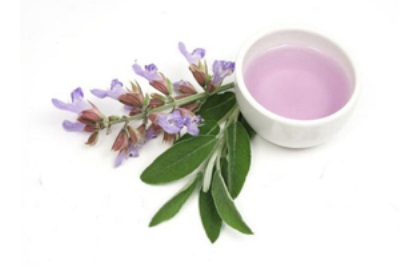Termination of lactation or how to get rid of breast milk?
A baby fed with mother's milk receives from mom not only the nutrition necessary for growth, but also love, as well as a sense of security. Therefore, the decision to finish breast-feeding should be deliberate, and should act patiently and carefully.
What does this mean?
Excommunication refers to the transition of the baby to another diet when the mother stops giving the baby breast milk. This is not always a transition to solid food - if the baby is weaned at an early age, then mother's milk is replaced with mixtures.
How to understand that the baby is ready for weaning?
If a mother intends to finish lactation at the most optimal time for this, she waits for the beginning of the involution of the mammary glands, as well as the readiness of the baby to stop breastfeeding. In such a case, breastfeeding can be completed under the following conditions:
- If the baby asked for a breast, and you offered him a little wait, he agreed. Or mom managed to distract the toddler from breastfeeding with a toy or other occupation.
- If the day the baby is able to fall asleep without attaching to the breast.
- If not the mother, but another person can lay on the night sleep of the baby. In this night waking up rarely.
- The child is applied to the breast 1-3 times during the day and most of these attachments are associated with sleep.
- At night, the child either sleeps or asks for the breast 1-2 times in the morning.
How to understand that the child is not ready?
It is too early to wean a baby if he:
- It is applied to the chest before bedtime, as well as immediately after waking up.
- He eats breast milk at night several times, and in the daytime mum's milk feeds on complementary foods.
- Runs to stick to the chest when in need of comfort or support.
- Immediately applied as soon as mom returns after a long absence.
- May ask for his chest when he is bored.
Contraindications
It is not recommended to start weaning in such cases:
- The child is sick or needs her mother's breast when teething.
- The kid has just suffered an intestinal infection.
- There have been major changes in the family (mother’s return to work, relocation, and others).
Also, do not proceed to weaning in the hot season. In addition, the mother should not leave the baby to stop lactation, since this act can affect the psychological state of the child.

Why do we need to wean gradually?
There are many reasons to stop breastfeeding, but if it is possible to influence this process, gradual weaning is always preferable. It more favorably affects both the baby and the mother's breast. A baby with gradual weaning will be emotionally easier to respond to stopping breastfeeding. Well, mom's body with this approach will naturally reduce milk production.
How to make friends with a bottle?
Early cessation of lactation forces the mother to introduce the baby with a bottle, but many babies refuse this type of breast replacement. Do not rush the baby and do everything gradually. Teaching the baby to the bottle, you can wet the nipple with a few drops of breast milk. Such a nipple baby is more willing to take in your mouth.
Do not offer a bottle too hungry baby, it can greatly upset him. It is best to give it at the moment when the half-mummy is sleepy.
You can also ask someone else to give the mixture in a bottle so that the baby does not smell you and does not expect to get the breast, not the nipple. We also do not recommend feeding the baby from the bottle in the place and position in which the breastfeeding was carried out. We advise you to read our article about how to accustom baby to the bottle.
Types
Excommunication happens:
- Rude.
- Partial.
- Gradually.
- Naturally.
With rough weaning, the child loses milk suddenly, for example, in the case of a serious illness of the mother. Partial weaning leaves the baby 1-2 breastfeeding. The gradual weaning option provides for the slow and gradual elimination of feedings and bottle training. With a natural weaning process, the baby directs the process, so the mother feeds him to the moment when the baby refuses to breast.
Stages
With gradual weaning, mother removes one feeding every two weeks. At the last turn, they refuse to feed at night, after tuning that for several nights, it is possible that the baby will cry or be capricious. Mom's goal is to help the baby forget about the process that is so dear to him.
The first to remove either those feedings that are least important for the child, or those attachments that most interfere with the mother. However, in most cases, the actions of the mother will gradually look like this:
- Restriction of attachments in the afternoon. There is one or two applications in the daytime before bedtime.
- Separation of attachments to the breast from the process of falling asleep (to take the breast before the child falls asleep), after which the rejection of these attachments. Mom should exclude breastfeeding from the usual ritual of putting the baby in the daytime.
- The same exclusion of feeding from the ritual of falling asleep in the evening.
- Replacing feeding in the morning after waking up with a regular meal.
- No feedings at night.
Mom needs to put on closed clothes, and when the peanut reaches for her breast, offer to drink or food in return. You can not sharply pull up a crumb or scream at him, even if the baby began to make trouble and hysteria. Try to switch attention.
At night, you can offer crumbs of tea or water from a mug or cup. So you will help him to break the night sucking.
Ways
Hormones
If lactation is required to stop abruptly, drugs are most often used. One of the most common drugs to eliminate lactation are drugs that affect the level of prolactin. These drugs affect the pituitary gland and inhibit prolactin production, with the result that lactation stops. Estrogens and gestagens are also often used.
Bromocriptine, dostinex, microfollin, urrogestan, norcolute and others are referred to hormonal anti-lactation agents. Since they have their own contraindications and side effects, it is important to consult a doctor before using them. It is the doctor who is able to determine which hormone drug is prescribed to a specific woman.
Non-dairy dressing
Some mothers decide to bandage their breasts when weaning. They completely empty the mammary glands and tie a sheet or an elastic bandage on top.With tension in the breast, such a bandage is removed, the milk is decanted, after which the breast is tied up again. It is noted that after the third dressing, the milk from the breast disappears. However, this way to affect lactation is not just very uncomfortable for mom. It also increases the risk of various diseases of the breasts.
Folk methods
Effective ways to stop the production of milk at home is the use of sage, as well as a decoction of peppermint. Read more in the article about termination of lactation with sage. Such tools are recommended only for healthy women who decide to stop lactation gradually. To folk remedies can also be attributed to various diuretic herbs - horsetail, elecampane, ordinary parsley, bear ears, lingonberry sheets and others.
Other methods
Mom can negotiate with children over the age of 1.5. One of the methods is to seal the nipples and areolas with a physical adhesive plaster and an explanation that there is no more milk. You can also say that the milk went to another baby.
To cause a negative reaction to the breast, you can lubricate the nipples (only in the absence of cracks) with something bitter and unpleasant, for example, with lemon juice.
Often, women are advised to limit nutrition and also drink during the weaning period, but these methods cannot be called effective. To reduce the production of milk lead only a very strong depletion and dehydration of the mother.
The reaction of the mother's body
If lactation is completed gradually, and during the period of involution, the milk will be produced less and less, so there may be no problems with the breast at all. However, many mothers still come after milk is stopped. It fills the chest, stretches it and brings uncomfortable soreness. In this case, the mother should wear a supporting underwear made of natural fabric, which has no bones.
If the milk rush is very strong, the woman should slip her chest a little so that she becomes soft. If you express the chest completely, there will be no breast tenderness, but the process will take a long time. Compresses from chilled cabbage leaves can also help to remove the swelling and tenderness of the chest.
Possible problems
- Hormonal disorders in women. Their risk increases if, immediately after the cessation of lactation, the mother begins to take contraceptives, goes on a diet or makes some other drastic changes. A woman should take care of herself for at least another 2-3 months after weaning the baby.
- Continued excretion of milk from the breast. It can normally (subject to pressure on the nipples) stand out from the mammary glands up to several years. If the milk flows without pressure, and after the completion of lactation 3 months have passed, you should consult a doctor.
- The appearance of caries in the child, if the mother gave a bottle of sweetened liquid to replace the nightly feedings.















